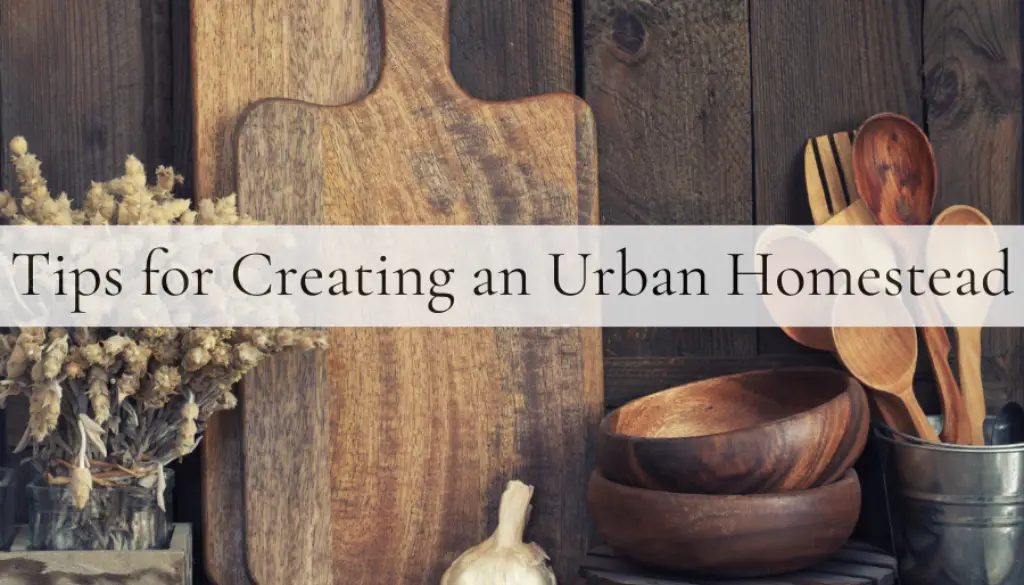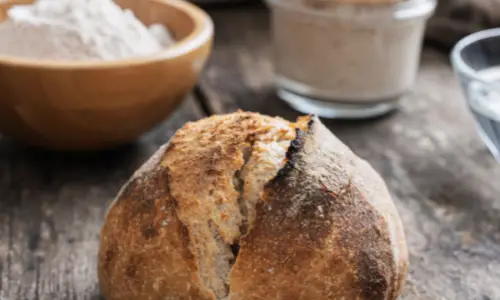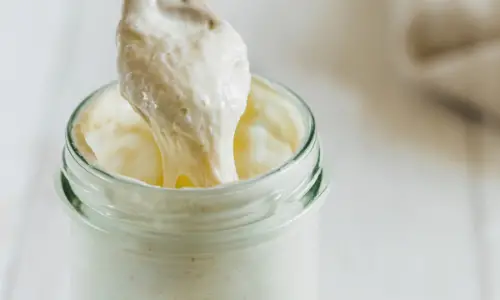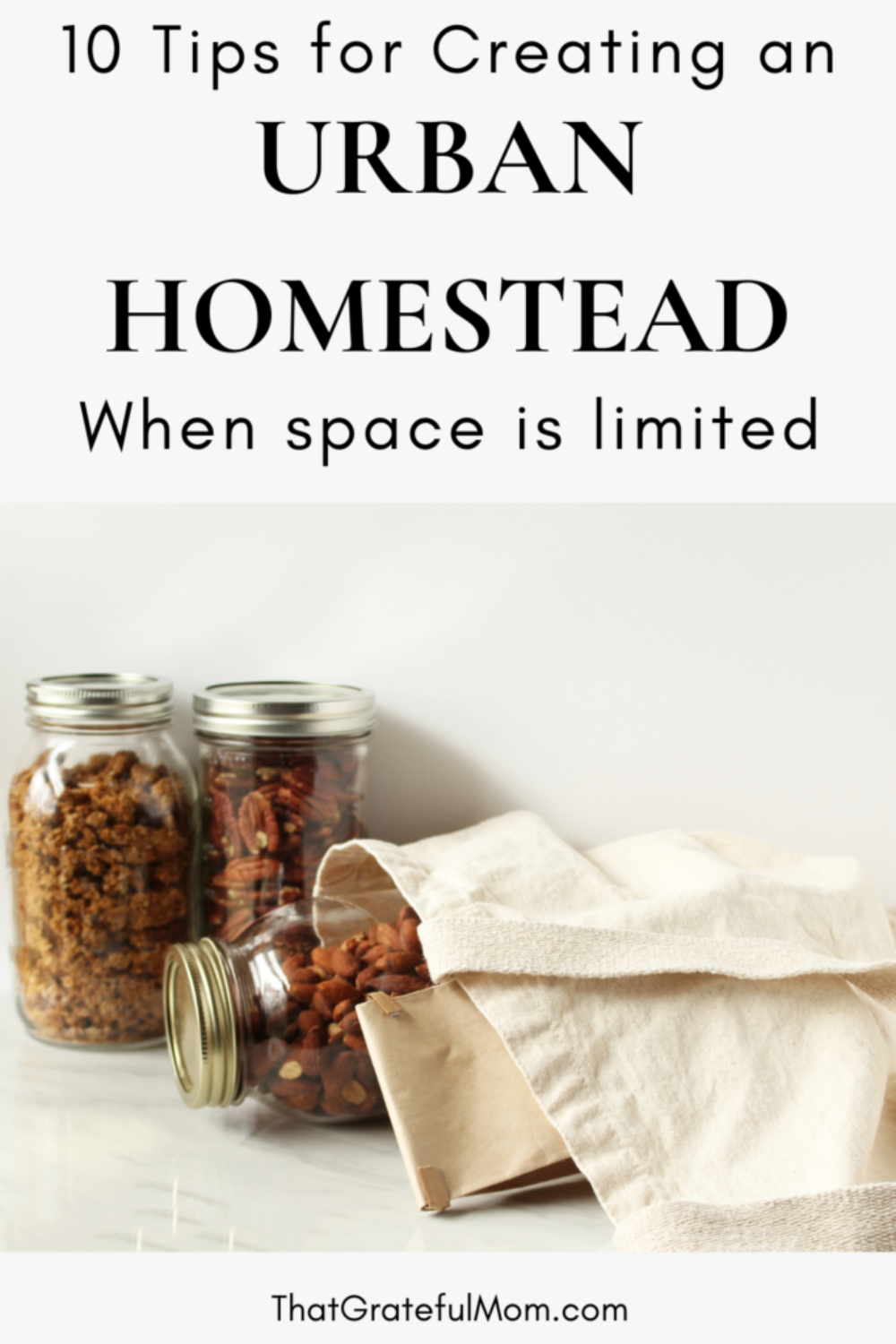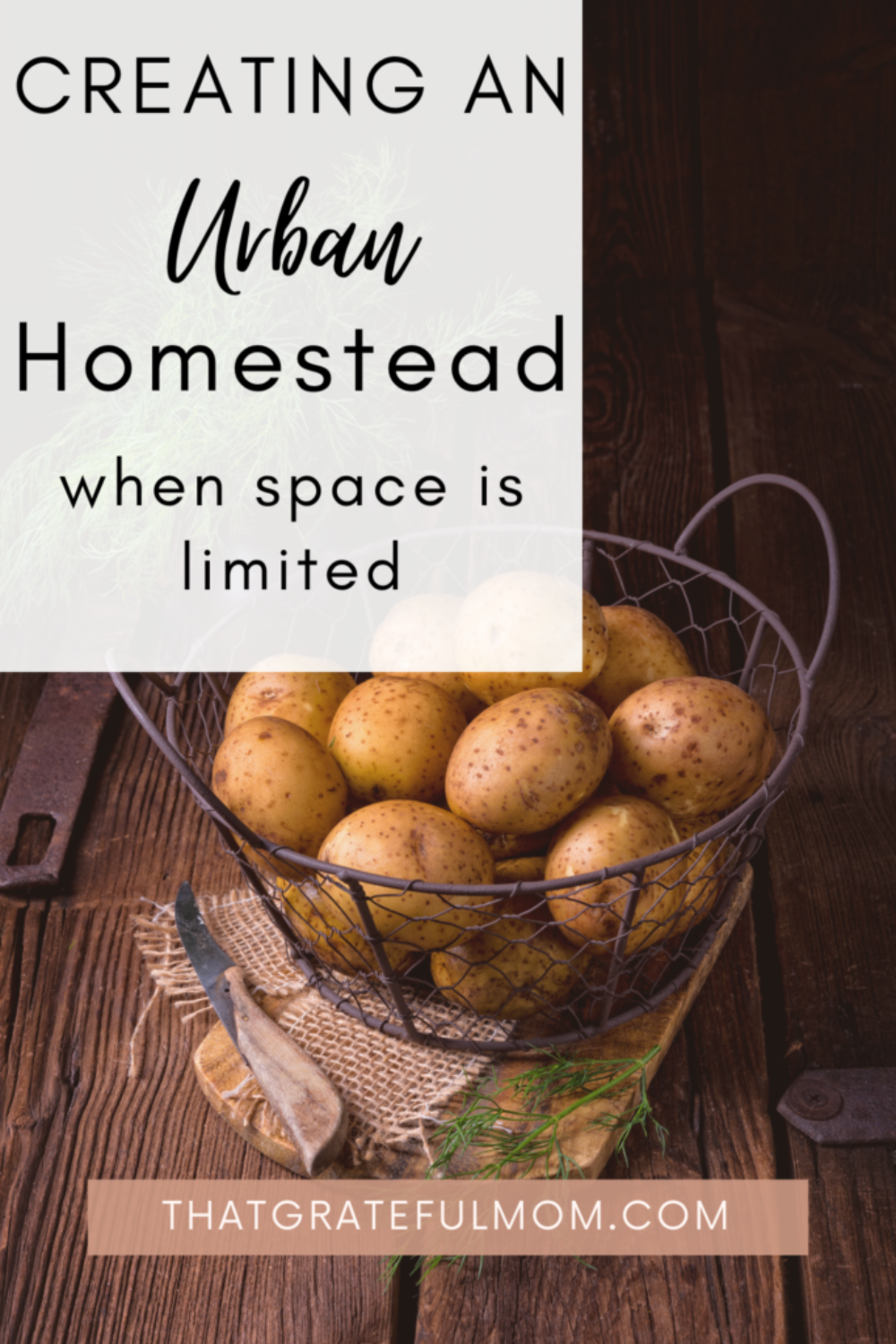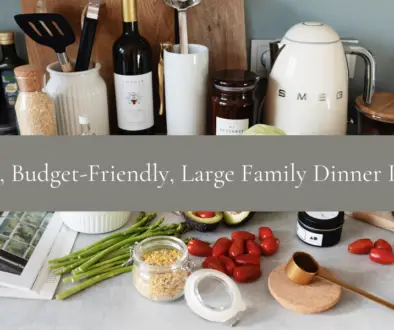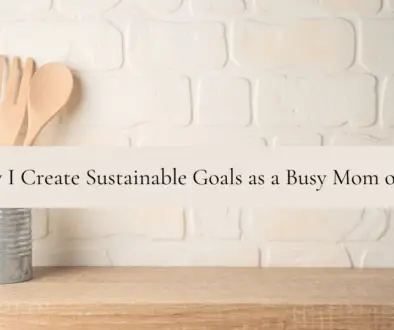Tips for Creating an Urban Homestead: A Guide for Beginners
As much as I wish we had a homestead where we were completely self-sufficient, with fruit trees, a chicken coop, and a vegetable garden, that’s not our reality. Creating a homestead in a busy city may seem challenging, but we’re doing it anyway! In March 2020, when the world was shutting down, it hit me that we needed to stop relying so heavily on others to provide food for our family and work to become self-sustained. That’s when we started creating an urban homestead and learning new skills.
Let me preface this by saying that we do not have much space outside to make a homestead work. We aren’t going to let that stop us, though! We may not have acres of land, but who says you can’t create a small homestead and grow your own food in a small space? Yeah, we may still run to the store for groceries, but if I can put in some hard work and grow fresh produce, I’m going to try! I hope this post encourages you to do the same. Small steps will get you to your goal.
How do I create an urban homestead in my home?
I will share the skills and habits I’ve adopted that have helped us work towards creating an urban homestead and adopting sustainable living habits in our family. Hopefully, by the end of this post, you’ll realize it’s not as tough as you may think! Many of the skills we practice are skills our ancestors relied on to survive. We’ve just forgotten them over the years as more convenient options have become available. Leaning into those skills has made creating an urban homestead so much easier and given me a sense of pride as I’ve learned new things. If your outdoor space is limited, the good news is adopting a homesteading lifestyle is still possible.
Last year, we attempted tomato plants, but they died. Whoops. We also grew potatoes, and pumpkins, and started an herb garden. It was a great first year for us. This year, we hope to build raised garden beds, and plant potatoes, squash, green beans, and peppers. We also planted apple trees about 2 years ago that we’re hoping will be fruitful in the next year or so. We had fruit trees in our yard when I was a kid, and my siblings and I loved it. It was so fun to run outside and pick fruit in our own backyard. I want my kids to experience that, too!
Skills to practice for creating an urban homestead
Whatever your goals are for your homesteading journey, you may need to brush up on some skills to help you along the way. I have spent the last year learning how to bake from scratch, preserve foods, and use the limited space we have for gardening to our advantage. It’s been a great place to start for us, and while I still have a lot to learn, I feel more confident than I ever have that we can become self-sufficient and build a homesteading dream.
Sourdough
It can initially seem overwhelming, but don’t let that discourage you! Active yeast makes the most delicious bread and baked goods, and sourdough discard can be used for more recipes than I can count. Once you’ve mastered sourdough, you’ll never need active yeast for bread again. I currently use both sourdough and active yeast for different uses and enjoy baking with both. I started making my own bread over a year ago and have never looked back. It’s pretty neat that I can reduce the unnecessary ingredients we’re exposed to in our food, and keep our budget in check.
Pasta from scratch
I started making pasta earlier this year, and I’ll never go back to store-bought pasta again. Nothing compares to making it yourself. It’s fresh, flavorful, and crisper than anything you can buy. Plus, you’ll get a good arm workout in kneading the dough! I like to make a big batch, roll it out into fettuccine, lasagna, and spaghetti, and dry it out for later use. We eat pasta at least twice a week, so having it on hand ready to cook has been so convenient. It’s a great way to prep meals in advance and cut back on runs to the grocery store.
Baked goods
Baking is an excellent skill to become accustomed to when creating an urban homestead. If you’ve never been excited by baking or feel intimidated, now is the best time to hone your skills and get comfortable in the kitchen.
As convenient as it may seem to run to the grocery store and grab whatever you need, baked goods are filled with preservatives to keep them fresh for as long as possible. You can avoid these unnecessary ingredients by making them yourself. Start slow and work your way towards more complicated recipes. I’ve mentioned this, but I started baking a lot about a year ago, and it’s been great for my mental health. I’ve become more confident in the kitchen, kept our budget in check, and reduced the unnecessary ingredients we’re exposed to in conventional foods. I now make multiple types of bread, pasta, cinnamon rolls, pizza dough, and other treats every week, and my kids love it.
Gardening
You don’t need miles of dirt to have a successful garden. As wonderful as that might seem, even a small garden will provide your entire family with free food. Successful plants can create a multitude of fruits and veggies per plant, creating an opportunity to stock your pantry for next to nothing. Put your yard to good use and grow healthy food for next to nothing. If you’ve never grown anything in your life, gardening may feel overwhelming at first, but don’t let that discourage you from trying. Even a small yard could help you provide fruits and veggies for your family and cut back on how much you need to purchase.
Canning
Canning goes hand in hand with gardening. You won’t have to worry about wasting fruits and veggies when you learn how to can and preserve the produce you worked so hard to grow all spring! If you’re not gardening yet, buy in-season fruits and veggies so they’re cheaper and preserve the excess to use later. If you’re nervous, here is an excellent article on canning for beginners.
canning is a skill I am not confident in yet, but plan to start researching how to get started. One of the nice things about canning is you don’t need expensive equipment. Once you have mason jars, it’s simple to preserve food for later use.
Depression-era living
It’s not as sad as it sounds, I promise! This just means embracing depression-era habits to help save money and stretch your budget in creative ways.
Schedule meat-free meals, repeat dinners to reduce the items you need to purchase from the grocery store, use kitchen scraps to make vegetable stock from scratch, and bulk up your meals with beans and root veggies, stretching your grocery budget further.
Money-saving habits stretch beyond food, too. This could include shopping at a thrift store, repurposing purchases for other uses, and more.
Are you looking for more tips on depression-era living? Click here!
Bulk cooking
It’s much easier to avoid grabbing a pizza or turning into the drive-thru lane when you plan your meals ahead of time and cook in bulk—making soup? Double the recipe and freeze it. Meatballs, meatloaf, lasagna, and casseroles all freeze well, so you can pull them out when needed and heat them up! I try to make 2 meals at once reducing the amount of time I’m in the kitchen while stocking our freezer with meals. It’s an easy way to plan ahead, keep up with meals, and have time for other activities in my daily life.
Once you get into the habit of doubling simple recipes, stocking your freezer with delicious meals will feel like second nature.
Consider natural home remedies
Over the years since my son’s cancer diagnosis, we have become very comfortable learning natural home remedies for simple issues that don’t need immediate attention from a healthcare provider. Learning how to use natural ingredients that you most likely already have on hand to solve minor health issues will save you money and time. Herbs and essential oils can help with all sorts of things like headaches, discomfort, pain relief, and more.
While I understand not everyone agrees with holistic alternatives, we have found them incredibly helpful, and love learning different ways to manage simple health issues at home. If you are more comfortable speaking with a healthcare provider, do what is best for your family.
Learn simple sewing and knitting skills
You don’t need a high-end sewing machine, but learning simple sewing and knitting skills to fix tears in clothing or replace a missing button instead of throwing them away is excellent. You’ll save so much money and extend the life of your wardrobe.
Final Thoughts
Creating an urban homestead is possible, even if you have less space! Although it may be small scale, creating the homestead lifestyle of your dreams is possible without moving to the country and buying land. Just remember, with patience and time, you can make this work, Choose one skill to focus on and start there! Do what you’re most comfortable with and what works best for your family. Which tip are you most excited to try? Let me know in the comments below.
This site may contain links to affiliate websites including Amazon. I may receive an affiliate commission for any purchases made by you through Amazon or other potential affiliates and no additional cost to you. Thank you for your support.

